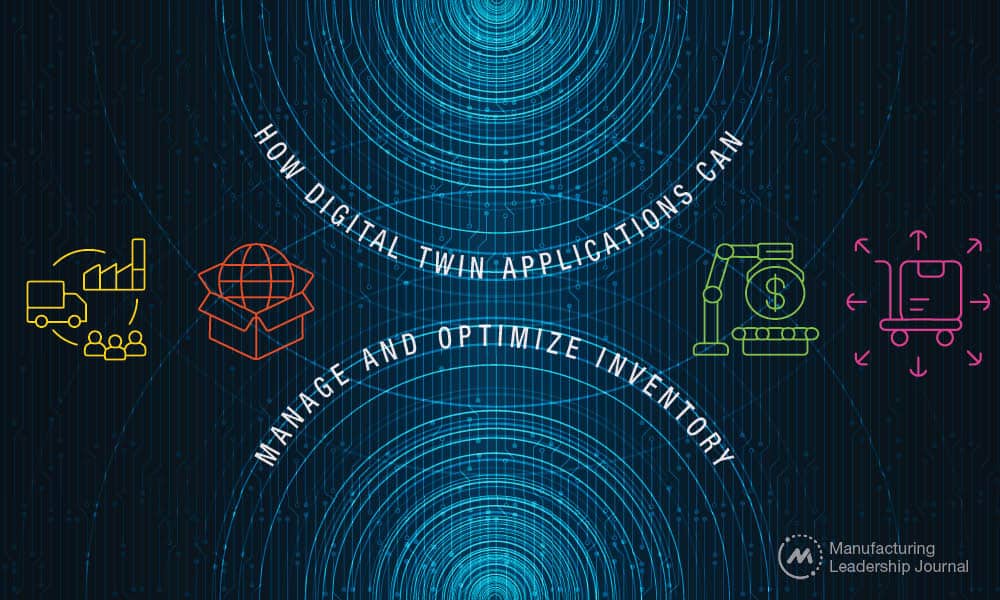How Digital Twin Applications Can Help Manage and Optimize Inventory

This case study shows how one manufacturer used simulations to evaluate processes and potential equipment investments.

TAKEAWAYS:
● Manufacturers can use digital twins to conduct real-time analyses of processes or operations to predict future performance.
● Running simulation scenarios helped an industrial food production company address bottlenecks and avoid spending millions on new tanks.
● Models created using digital twins can be easily modified to evaluate new operating scenarios in the future.
Plenty of manufacturers use scenario modeling to forecast how their inventory needs may ebb and flow as supply and demand shift. But for organizations that want to enhance the precision of such forecasts, digital twin technology can take things a step further.
Digital twins—essentially virtual representations or simulations of physical operations—allow manufacturers to see how a process or operation performs in real time and predict how it may perform in the future. This type of simulation will increasingly become table stakes in the smart factories of the future.
One RSM client, a midsize industrial food production company, used digital twins to optimize its bulk inventory management capabilities and ultimately determine which investments in personnel, storage tanks, and other supporting storage capacity were necessary. Through simulation, the business was able to re-focus investments on areas of the business that would yield more value. We explore the factors at play in putting this transformative technology into action.
Determining Future Capacity
At the outset of the project, the industrial food production company had numerous priorities: making operations as efficient as possible, improving business processes, and reducing operating expenses while also prioritizing capital investment. To achieve those objectives, the company had purchased production line equipment that would enable it to produce a greater volume of product, but it needed to understand the upstream implications before increasing capacity.

“In running a simulation that accounted for more staff, the scenario met the target sales goal, effectively reducing guesswork of how the business might need to augment staff to accommodate growth.”
That’s where a simulation analysis proved helpful. The company fed operational data into a digital twin model and ran various simulations to understand what the appropriate size of production equipment would be needed to meet the production line demands. Solving that question had many variables, including product mixes, batch sizes, upstream processes’ capacity, new and existing equipment, and plans for future growth.
The main challenge was to determine whether the future-state production system could meet the company’s sales goal of producing an additional 9.5 million pounds of product per year, and how to make sure the organization understood the broader change and impact that growth would have on operations.
RSM’s engagement with the company involved a three-phase approach using digital twins to address that challenge:
1. Discovery phase
- Document simulation questions, assumptions, and model scope
- Collect existing process performance data and/or plan operations studies
- Document, review, and approve on-paper model of in-scope processes and future-state scenarios
2. Analysis phase
- Conduct process studies and finalize model inputs
- Build simulation model of existing system
- Validate simulation model against current performance
- Finalize future-state scenarios
3. Scenarios and impact phase
- Modify model to reflect future-state scenarios and answer simulation questions
- Summarize scenario findings into a final deliverable concluding with a readout for executives and other key stakeholders
Through the simulation process, the company determined that it would need to implement additional production shifts beyond its existing staffing plan to meet anticipated demand. In running a simulation that accounted for more staff, the scenario met the target sales goal, effectively reducing guesswork of how the business might need to augment staff to accommodate growth. The company was also able to determine that additional storage tanks effectively provided no additional production capacity.
With these insights, the company decided to focus on adding equipment at the upstream process before purchasing any new tanks. Running simulation scenarios prevented spending millions on new tanks and focused the company on addressing the bottleneck process.

“The foundational importance of digital twin simulations lies in the fact that they can help businesses transform data-driven insights into real-world decisions.”
Key Benefits
Understanding specific inventory and staff levels is just one aspect of the use case for digital twin simulations. This technology also helps organizations understand the design and layout needs of their warehouse and production facilities and improve stakeholder understanding of impending changes by using 3D representations to explain the change and supporting rationale.
The simulation’s flexible model and dynamic scenario levers enabled the company to experiment with real-world variability that showed the range of expected performance across multiple simulation runs. Models are an enduring asset, and easily modified to evaluate new operating scenarios in the future.
Other key benefits included
- Apples-to-apples comparisons of key performance measures across alternative scenarios versus current state
- Simulations that are easily modified for future projects
- Mitigation of uncertainty and risk of initial plan allowing the client to pivot before missing customer commitments
- Identification of additional process improvement opportunities with upside of an additional 1 million pounds in annual production
From Insights to Decisions
The foundational importance of digital twin simulations lies in the fact that they can help businesses transform data-driven insights into real-world decisions. For many manufacturers, this capability will be paramount as economic and margin pressures require many companies to shift from a “grow-at-all-costs” strategy to focusing on profitability.
Businesses should investigate how digital twins might help them optimize operations through evaluation of multiple potential scenarios, including1
- Diversifying and optimizing product offerings with a focus on high-margin products
- Focusing on production efficiencies across the entire value chain, with continued investment in automation and productivity-boosting technologies
- Renegotiating contracts with suppliers and working with customers to negotiate cost reimbursements
- Streamlining processes and upskilling employees to improve efficiencies
All of this can ultimately help organizations better understand where to focus their investments and adapt operations as needed. M
About the authors:

Casey Chapman is a principal at RSM US LLP.

Joe Krause is a supervisor at RSM US LLP.
1 This paragraph originally appeared in the RSM US article “Margin pressure requires shift from grow-at-all-costs to profitability.”